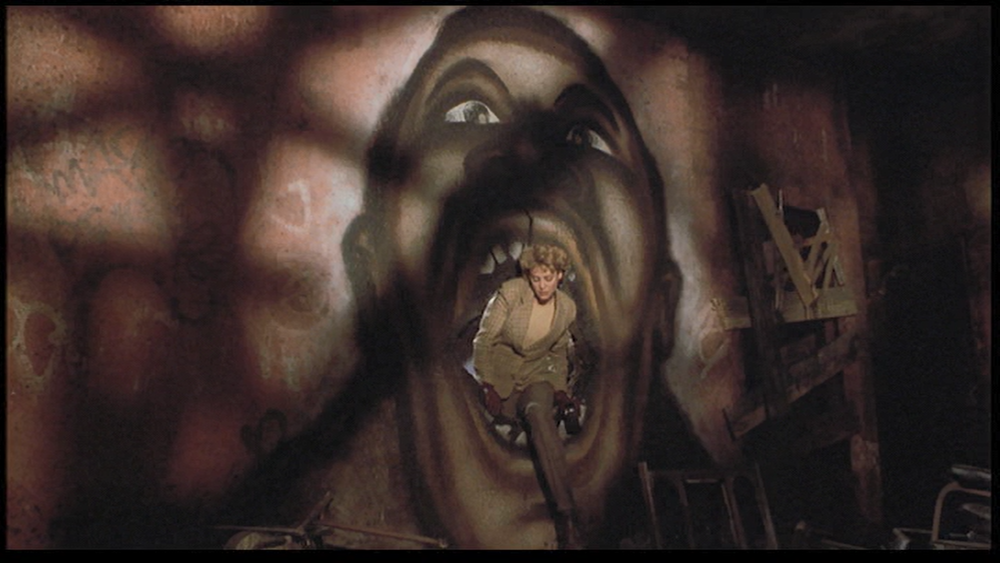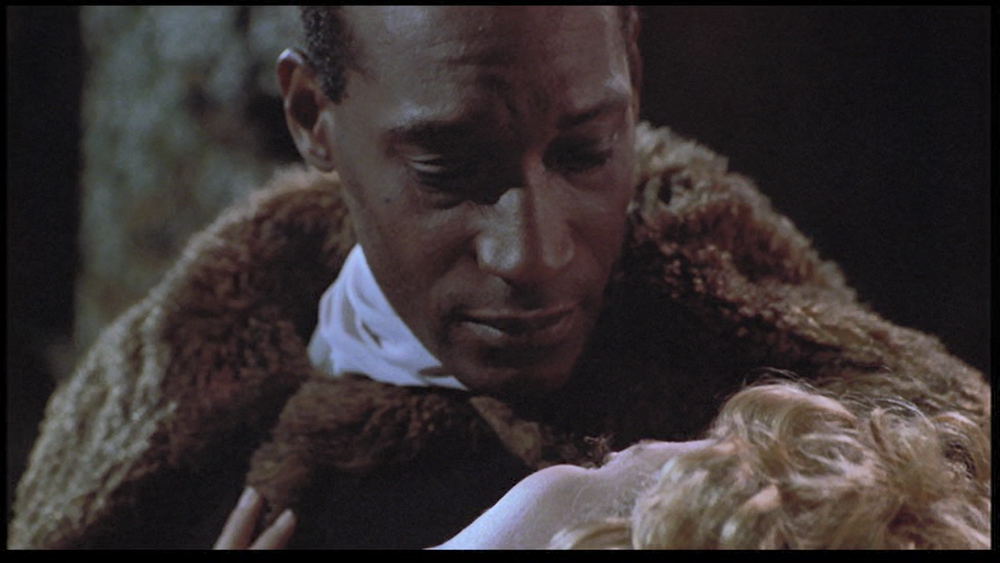Candyman is an electrifying, terrifying film. It is the rare mainstream horror movie that prominently features Black actors, settings, and stories. And it shamelessly trades in some of the most egregious racial stereotypes that American culture has to offer.
Such is the uncomfortable paradox of Candyman: its style, storytelling, and iconic villain stand up favorably with those of any other slasher film, and its serious engagement with Black characters distinguishes it from the otherwise overwhelming Whiteness of the genre.
And yet, watching its continuous distortion and demonization of Black sexual desire, one cannot help but think that this required entry of early 1990s horror cinema is in fact one giant step backwards in the representation of Black people on screen.

Written and directed by Bernard Rose and based on a story by Clive Barker, Candyman is a 1992 horror film that follows a White graduate student named Helen (Virginia Madsen) who studies at a university in Chicago and is working on a dissertation about urban folklore.
One of the stories that she encounters most frequently during her research is that of the Candyman: an educated Black man from late 19th century Chicago who had his hand sawed off by an angry White lynch mob, which then covered his body in honey and left him to die from bee stings, as punishment for engaging in an interracial romance with the daughter of a local, wealthy White family.
One century later, reckless nonbelievers can summon the Candyman (Tony Todd) into their homes by looking into a bathroom mirror and saying his name five times in a row. When he appears, however, he promises to exert his own bloody revenge by slashing open his caller from “groin to gullet” with the rusty hook that sits atop the bloody stump of his severed arm.
Helen soon discovers that the contemporary epicenter of Candyman mythology is the Cabrini-Green housing projects in northern Chicago, which, coincidentally enough, bear the same architectural layout as the upscale condo building that she lives in downtown.
As her research brings her time-and-again to the decrepit apartment blocks that were synonymous with violence, drugs, and the failure of public housing, the mythical bogeyman begins to show up, dear friends begin to get slashed, and her own life and work become inextricably entangled with the violent, unflagging pursuit of the Candyman.
From the inception of the genre in the late 1970s and early 1980s, slasher films have long held a latent, conservative fear of sexual desire. From Halloween to Friday the 13th to Nightmare on Elm Street, these movies were filled with bad guys with long knives who exacted gruesome punishment on young people (particularly young women) exploring their nascent sexuality. Even the progenitor of the genre, Alfred Hitchcock’s Psycho, finds its first and most iconic victim in a woman engaged in an extra-marital affair.
These films were almost always set in the suburbs, and almost always exclusively White. Look no further than 2017’s horror-satire Get Out as an example of the ultimate racially-conscious subversion of the genre, where a Black man visiting his White girlfriend’s family for the first time discovers that, beneath the liberal veneer and supposed docility of the suburbs lurks a barely disguised, carefully calculated violence directed squarely towards Black people.

Candyman moves from the suburbs to the inner city, from a racially homogenous to a racially diverse setting to employ some of the iconic images and stylistic preoccupations of the genre (e.g. scantily clad, terrified women with long knives held high above their heads [see Psycho]; hallways and mirrors and tunnels that extend endlessly, with the promise of the sudden appearance of someone or something you probably do not want to have waiting for you [see The Shining]; the supernatural persistence of an unstoppable bogeyman scored by a minimalist musical theme [see Halloween]).
But it holds closely onto the genre’s fascination and fear of sex, and adds to it one of the most persistent, nefarious racial stereotypes in the history of this country: that of the sexually dangerous Black man with an uncontrollable, socially destructive desire for White women.
Going back to 1915’s Birth of a Nation, the history of narrative cinema is rife with such fears of Black men holding White women captive for sexually exploitative reasons. As Ava DuVernay argued in her documentary 13th, these images stick around in the cultural subconscious, and have a strong impact on how people in the real world (as opposed to the cinematic world) think about Blackness.
Despite the terror and pathos that Todd brings to his performance, despite the Candyman’s own origin story deriving from an extreme act of racial prejudice, the movie’s representation of its bogeyman cannot help but slide into familiar, stereotypical territory. Narrated from a White woman’s perspective, an academic outsider who is fascinated with the abject poverty, danger, and graffiti-and-feces strewn walls of Cabrini-Green, the movie finds its terror in a Black man from the projects wreaking bloody mayhem in pursuit of a White female victim.
“Be my victim,” he coos over and over again, until Helen cannot help but succumb.
Like the best films in the genre, Candyman produces some dread-inducing images that linger with the viewer long after the end of the movie: a man’s mouth crawling with bees, a bloody hook smashing through a bathroom window, a towering bonfire of discarded furniture burning against the Chicago skyline.
But to what ultimate use are these images put? To scare, yes, but also to reinforce a racial stereotype that American culture refuses to let die.
This review is part of a weekly series on Black horror films that Tom Breen is hosting on the Joe Ugly in the Morning radio show throughout October. Tune in on WNHH Community Radio every Monday morning at 8:15 to hear a new review. For an in-depth exploration of Black horror cinema, check out Robin Means Coleman's 2011 book Horror Noire: Blacks in American Horror Films from the 1890s to Present